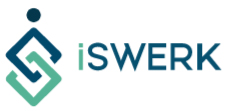
Imagine being able to scale your business with top global talent, all without the constraints of a traditional office or the headaches of managing third-party contracts. In the age of digital transformation, how you build your workforce could define your business growth for years to come.
As remote work becomes the norm, many C-suite executives and entrepreneurs are exploring flexible approaches to workforce management. Two popular models—remote staffing and traditional outsourcing—offer unique benefits and challenges.
Understanding their differences is essential for formulating sound business growth strategies and implementing practical business solutions.
What is Remote Staffing?
Remote staffing involves hiring remote employees who work exclusively for your company but operate outside of your physical offices.
These individuals become integrated members of your organization’s remote team, often participating in meetings, using company tools, and adopting your business culture.
Unlike freelancers or project-based external contractors, remote staffing allows you to build a dedicated remote workforce that grows with your business.
Key benefits include:
- Direct management and control over your remote teams.
- Access to a global talent pool, enabling you to source specialized skills.
- Higher cultural alignment and team cohesion, as remote staff are treated as extensions of your in-house teams.
- Flexible scaling allows you to expand or contract your remote workforce in response to evolving business needs.
As one of the trending business growth strategies, hiring a dedicated team through remote staffing helps reduce overhead expenses.
What is Traditional Outsourcing?
Traditional outsourcing means contracting a third-party organization for specific projects or processes.
Instead of hiring individuals to work as part of your team, you rely on a service provider who oversees and delivers the required business functions. Common examples include IT support, customer service, payroll, or digital marketing handled by outside agencies.
Typical characteristics of business outsourcing include:
- Limited direct oversight over external teams. The outsourcing provider manages recruitment, performance, and quality control.
- Turnkey solutions that help quickly address specific gaps or projects without hiring, onboarding, or training new staff internally.
- Potential cost savings in the short term, especially for specialized work or one-time needs.
- Less integration with your company’s culture, processes, and long-term plans.
Outsourcing is particularly effective for obtaining business support services that are not core to your main operations or for handling tasks that require specialized expertise temporarily.
What are the Key Differences Between Remote Staffing and Outsourcing?
What’s Best for Business Growth?
For business leaders, choosing the right workforce solution can unlock substantial business growth opportunities.
Remote staffing enables you to assemble specialized, fully committed teams that drive innovation, knowledge-sharing, and continuity—key factors in long-term business growth strategies.
It’s ideal when you want to retain full control and invest in building internal expertise.
On the other hand, traditional outsourcing offers a quick path to business solutions and support services for non-core activities, seasonal demands, or short-term projects.
Turnkey solutions free up your internal teams to focus on primary business goals, though they may not foster the same level of loyalty or alignment with your objectives.
Conclusion
Both remote staffing and traditional outsourcing have distinct roles in modern business. By understanding the differences and evaluating your specific business needs.
C-suite executives and entrepreneurs can leverage these approaches to:
- Optimize operations
- Support business growth
- Stay competitive in evolving markets
A strategic mix of remote workforce solutions and targeted business support services can:
- Align with your growth strategy
- Accelerate organizational progress
- Enhance flexibility and scalability
Choose The Right Partner
Partner with iSWerk, your trusted remote staffing expert, to build agile, high-performing teams that scale with your business.
With deep experience across multiple industries and global markets, we deliver tailored staffing solutions that drive efficiency and results. Let’s work together to take your operations to the next level.
About the Author
Denise Romero works as a copywriter at iSWerk (iSupport Worldwide), where she specializes in B2B content that helps businesses flourish. She specializes in creating clear, compelling messages that engage professional audiences and support strategic marketing goals.
About iSWerk
|
